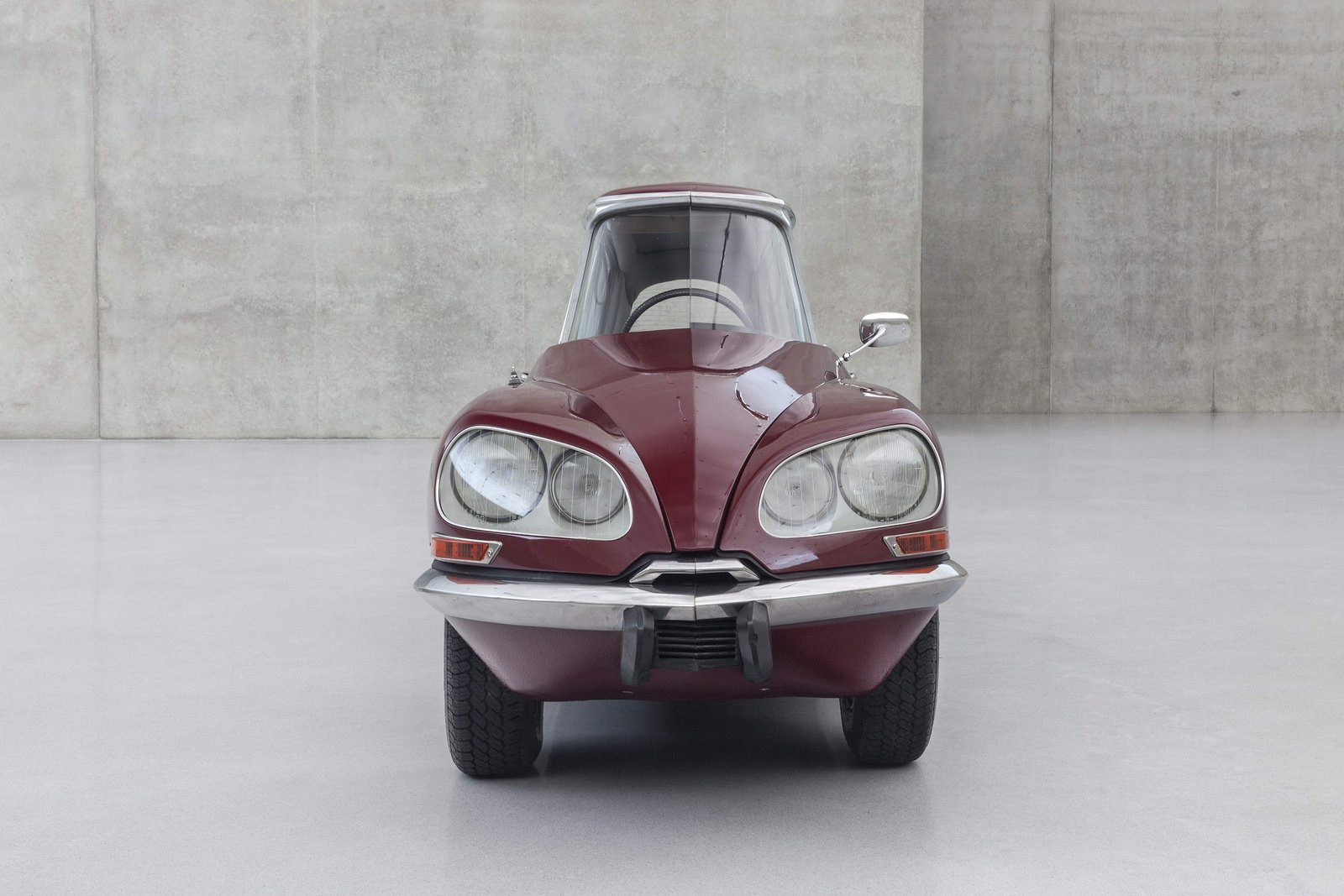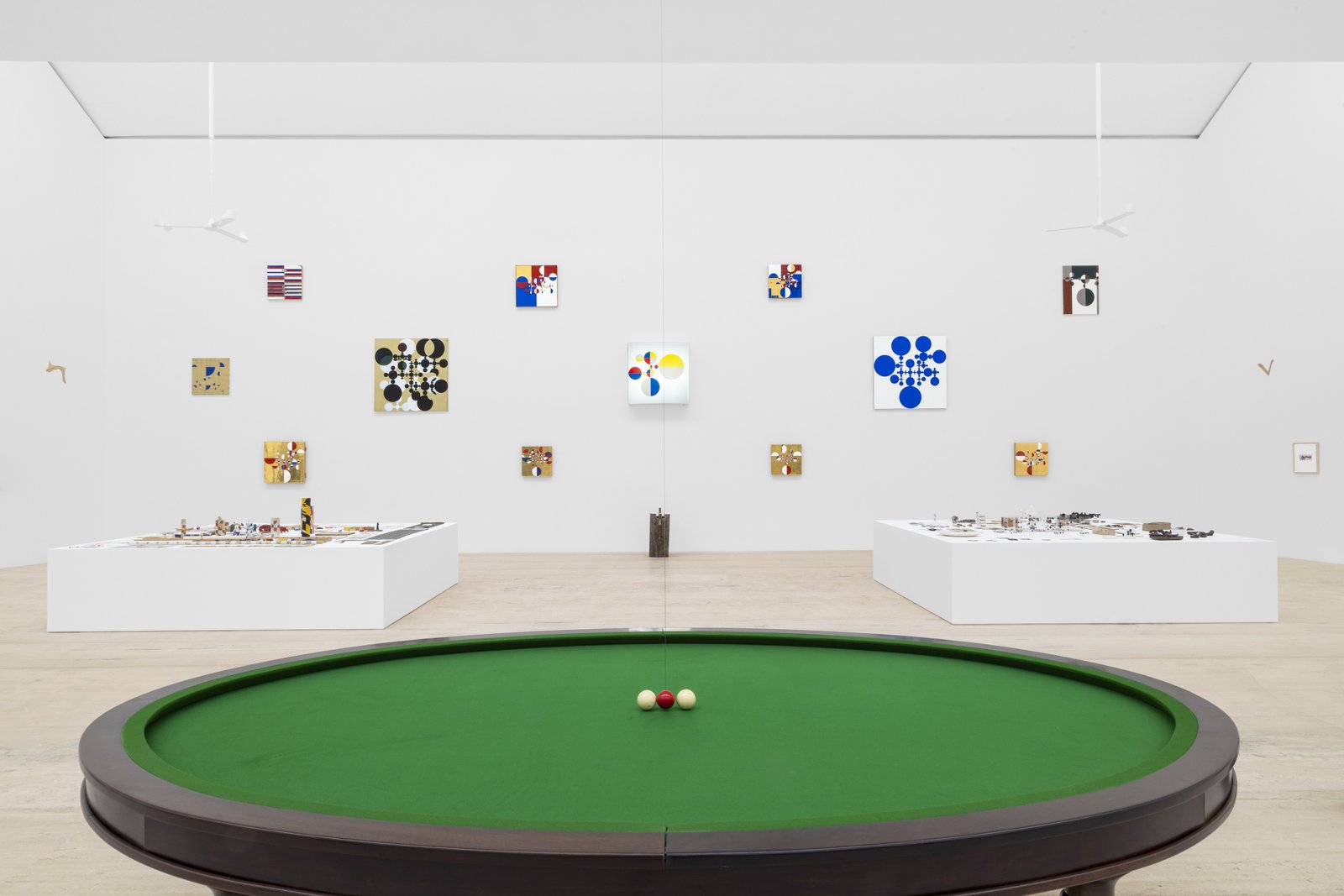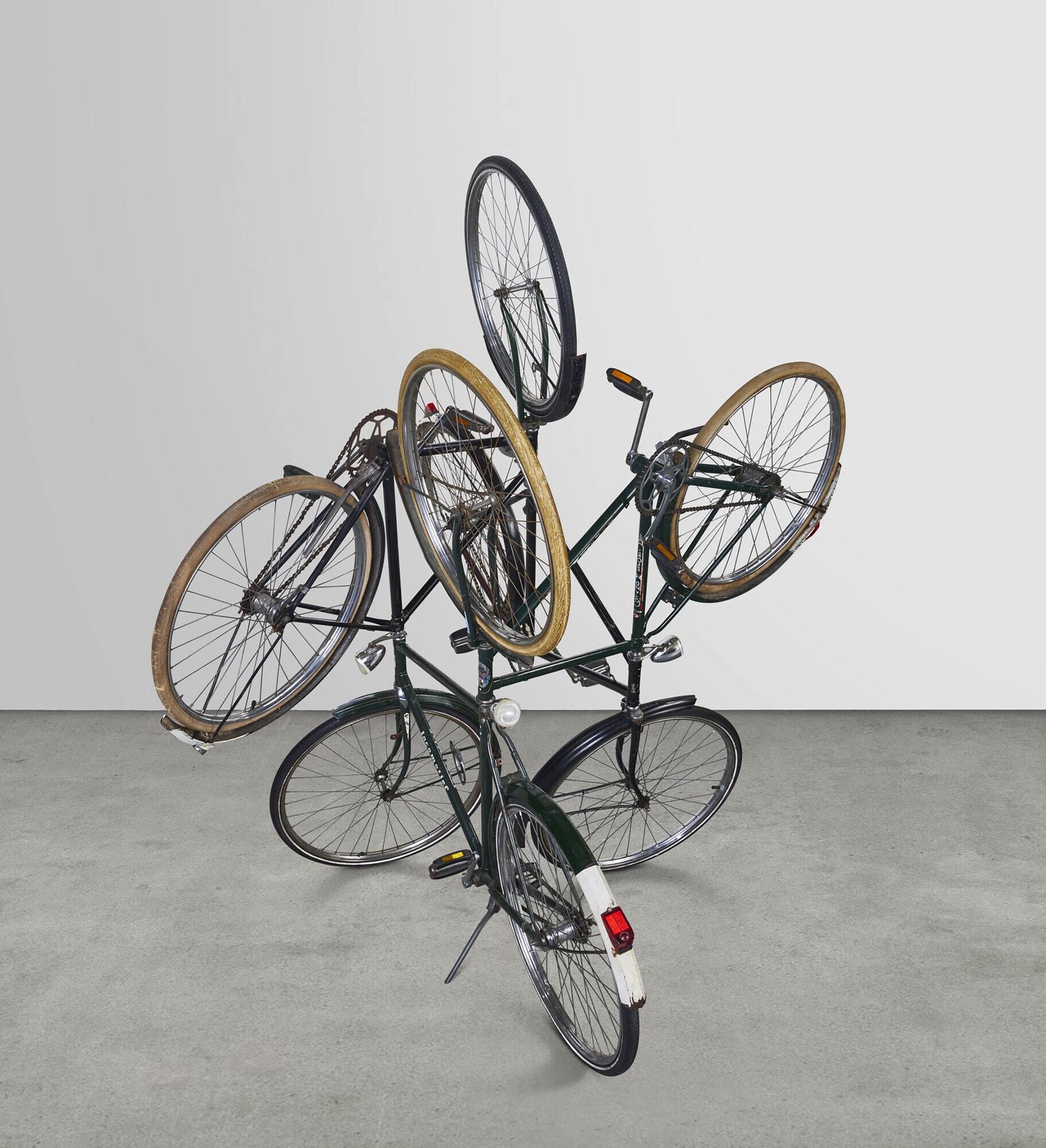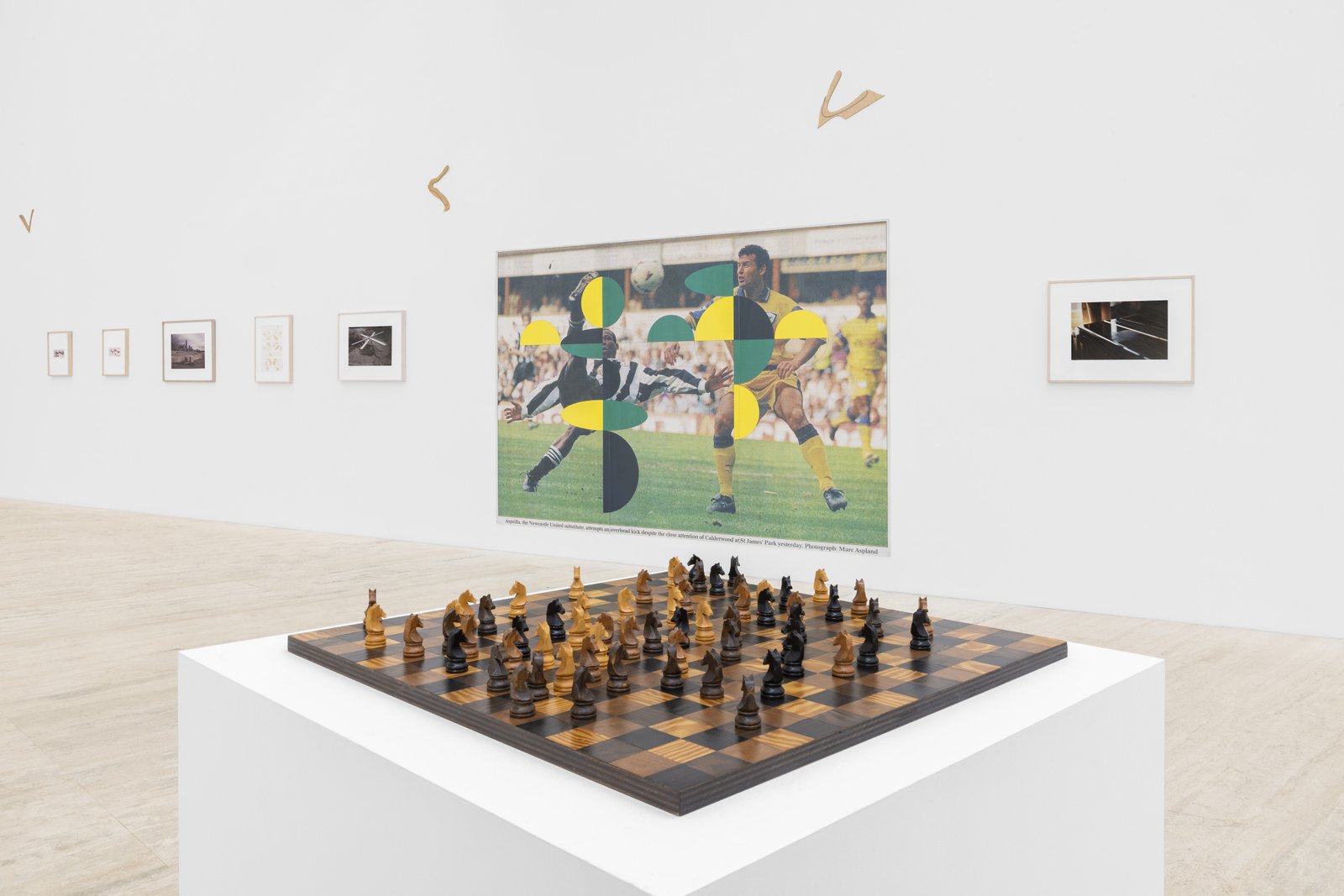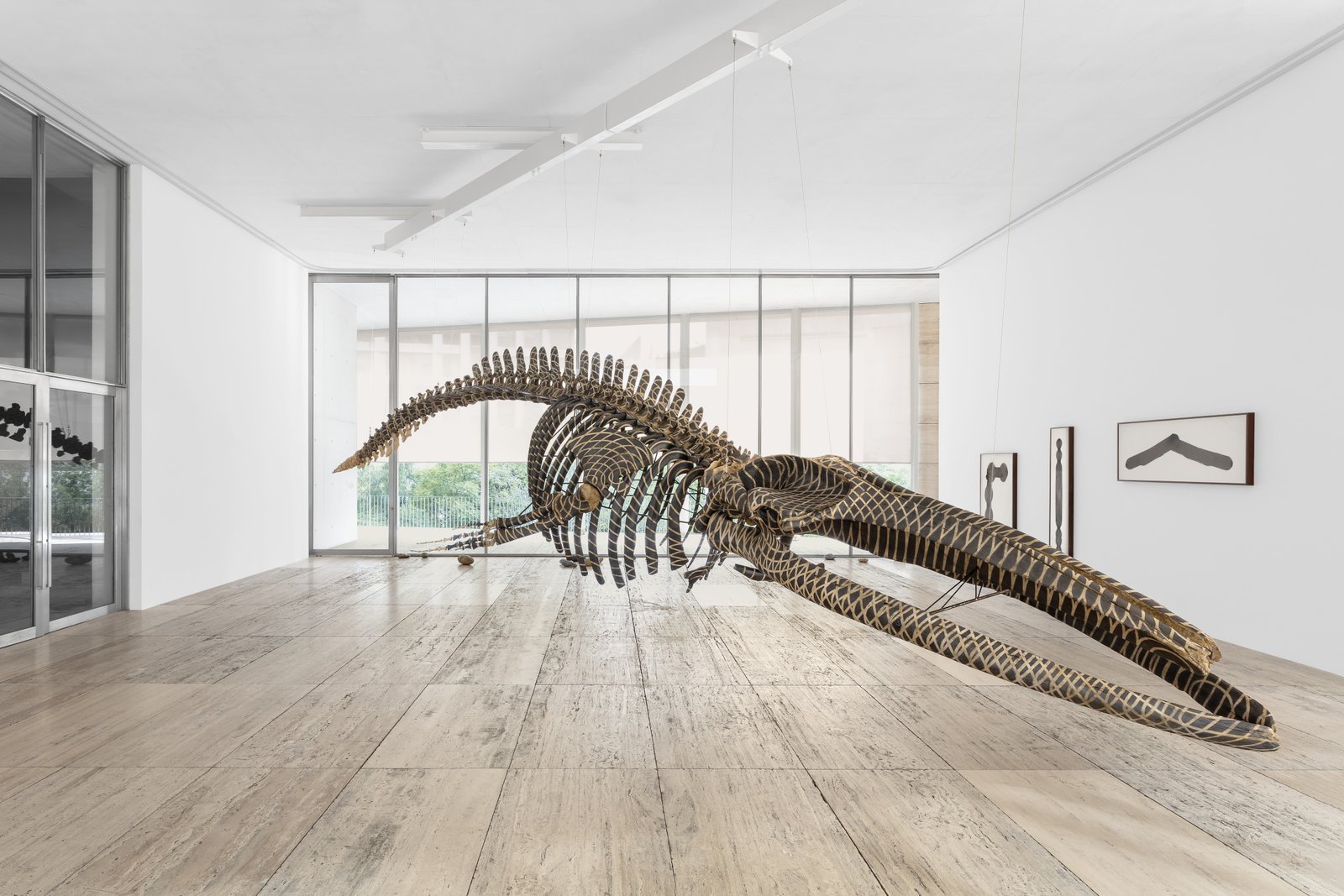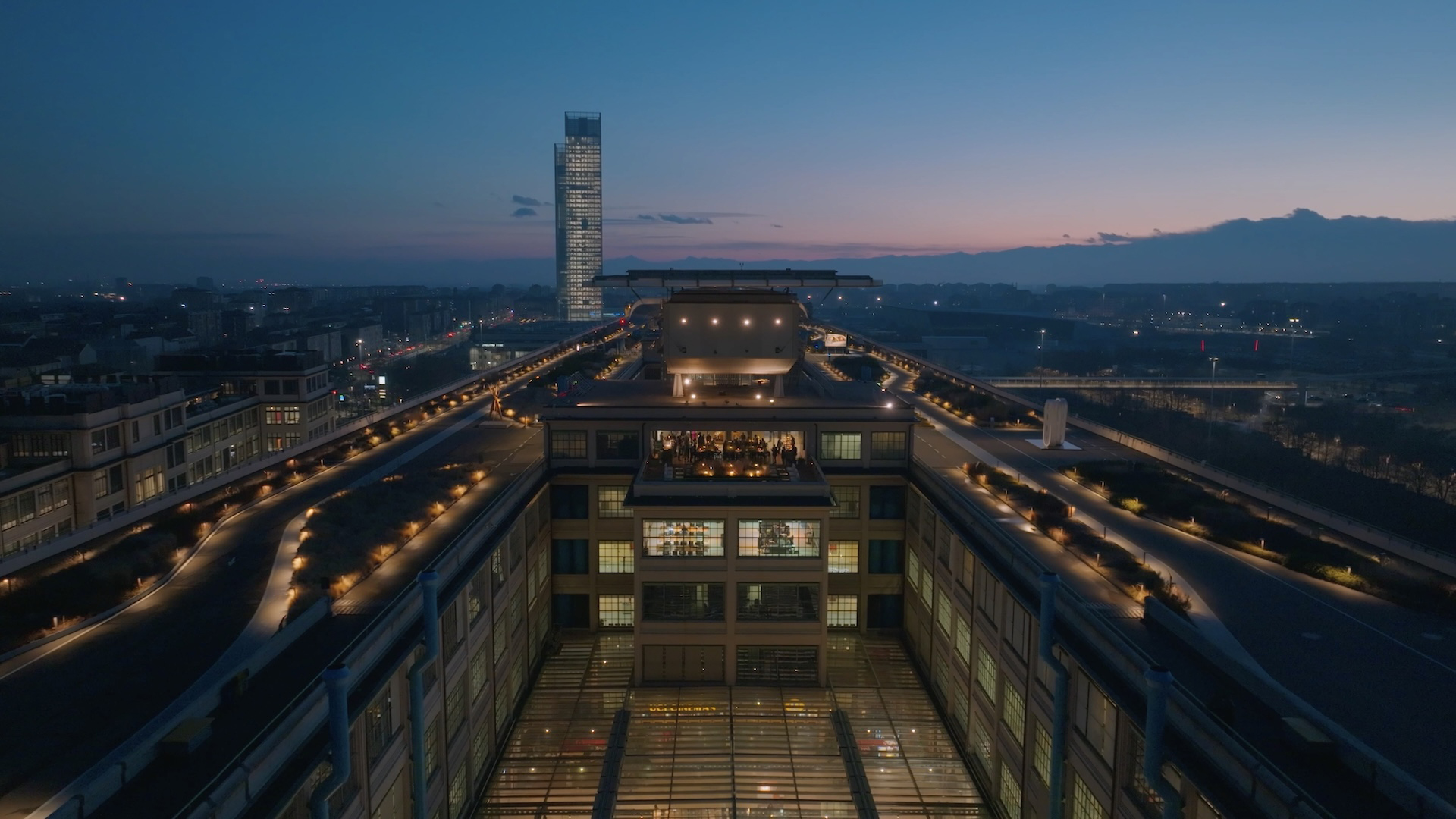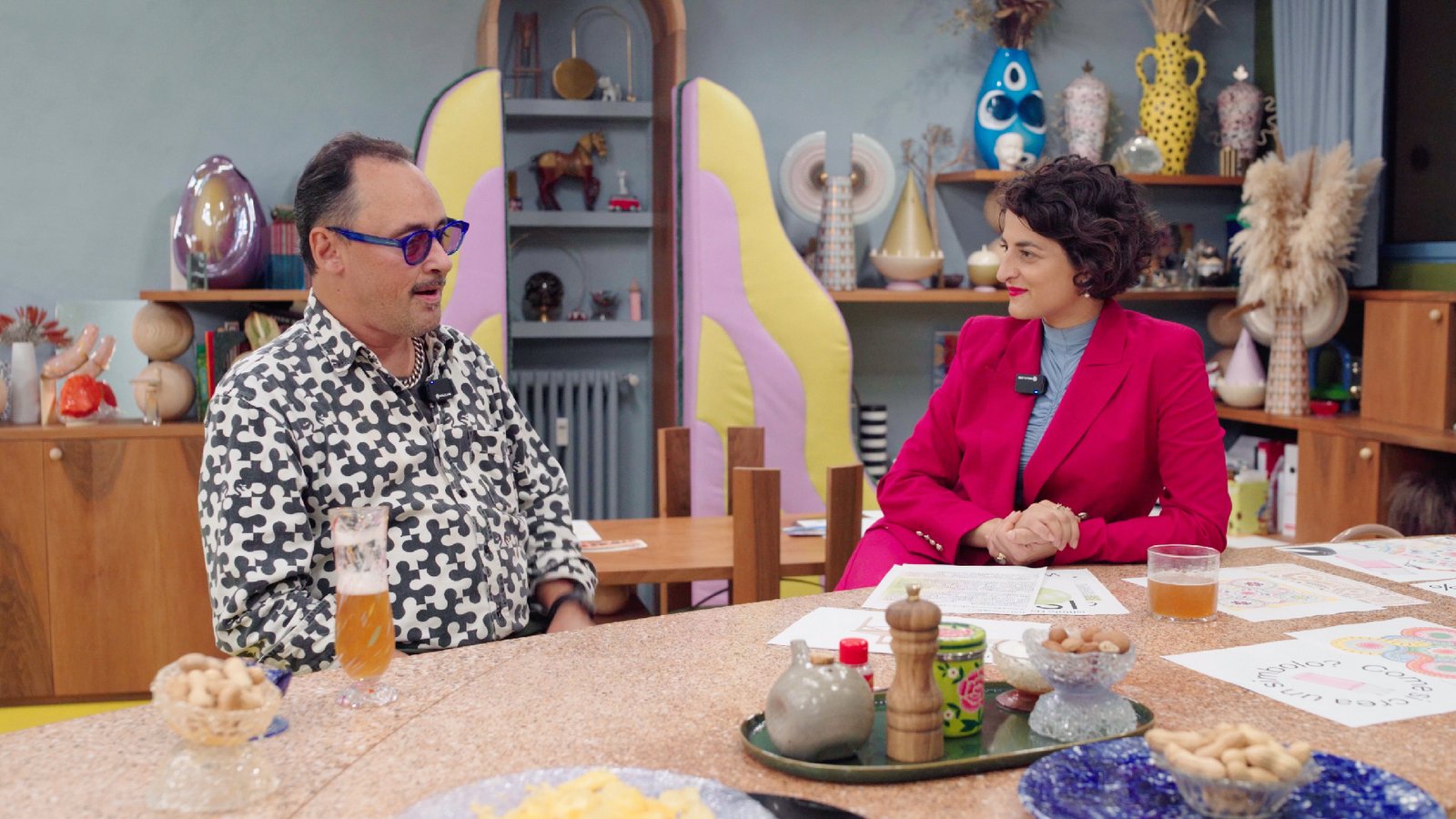
The major Gabriel Orozco Exhibition at the Jumex Museum in Mexico City
Installations, games, and sculptures: the Museo Jumex, the beating heart of contemporary Mexican art, hosts an unmissable exhibition.
A girl walks through the streets of a city. We realize we're in a Mexican city only because of the accent of the second voice that suddenly breaks into the scene. A (sadly) classic scene of cat-calling, carried out by a man at the girl’s expense. The young man gets up from the stool he was sitting on and starts following her like a beast would follow its “prey.” He continues with what he thinks are compliments to win her over. The girl ignores him and keeps walking without ever looking back. At one point, a loud crash breaks the scene. Something has fallen from the sky: a gigantic fruit juice bottle hits the guy squarely, flattening him on the sidewalk.
A voice-over exclaims:
“¿Quieres un mundo diferente y más sano? Nuevo Chispazo, bebida a base de zanahoria, frutas y verdura. ¡Solo para gente sana!”. (“Vuoi un mondo differente e più sano? Il nuovo Chispazo, una bevanda a base di carota, frutta e verdura. Solo per persone sane”)
It’s a 2002 TV commercial by Jumex, the second-largest producer of juices and natural drinks in Mexico after Del Valle. A company with a long tradition of marketing, whose commercials have often highlighted Mexican popular culture, with mariachi, masked wrestlers, and even characters from the golden age of Mexican cinema. Jumex has also stood out for taking a stance on civil and social issues, as shown by the scene just described, where the theme of gender-based violence is addressed and criticized—albeit in a lighter tone than we’re used to today.
THE HISTORY OF THE JUMEX FOUNDATION
Today Jumex has been inherited by Eugenio López Alonso who, together with a team of art professionals, founded the Jumex Foundation to promote contemporary art through collecting, education, research, and support for artists and museums. The Fundación Jumex Arte Contemporáneo was officially established on March 3, 2001, with the valuable support of Eugenio López Rodea and Isabel Alonso de López, and presented the first exhibition of the Jumex Collection at Galería Jumex: a 1,400-square-meter building in Ecatepec, an industrial area of Mexico City, inside the Grupo Jumex headquarters.
Although there was an audience interested in the exhibitions in Ecatepec, López Alonso knew he had to go further to share his passion for contemporary art with a wider public. Hence the idea of founding a museum that could introduce internationally renowned contemporary artists to a local audience. He assembled his team and commissioned British architect David Chipperfield to design the building, which would become his first architectural work in Latin America. On November 19, 2013, the Museo Jumex officially opened its doors, with the goal of awakening the sensitivity and critical thinking of visitors from diverse backgrounds.
THE EXHIBITION “GABRIEL OROZCO: POLITÉCNICO NACIONAL”
A few months ago, I traveled to Mexico on a road trip with friends, visiting several cities in this vast country. If anyone is thinking of going and wants to discover some interesting examples of contemporary art, I’d say that nearly all of the best offerings are concentrated in Mexico City.
One of the museums that struck me the most was certainly the Museo Jumex itself. First of all, because upon entering, you don’t feel like you’re accessing a museum in the traditional sense, but rather an open and free space. There are no ticket counters or gates filtering access—just friendly staff who discreetly welcome and guide you.
When I visited, the exhibition Gabriel Orozco: Politécnico Nacional was on display (open until August 3, 2025), the artist’s first solo museum show in Mexico since 2006. Orozco is one of the most important figures in contemporary Mexican art and a prominent presence on the international scene for over thirty years, constantly questioning what can be considered art, how it is made, and what it should focus on.
Curated by Briony Fer in close collaboration with the artist, the exhibition traces the trajectories of his practice: techniques developed over time such as rotation, symmetry, and the ability to shape time as both material and concept.
The exhibition features around 300 works, crossing different media and combining practices that in many cases might seem contradictory: small sculptures, complex installations, photographs, drawings, paintings, found objects, and assemblages. All accompanied, as often in Orozco’s work, by a playful and experimental spirit.
Not surprisingly, in the museum’s outdoor plaza, a new version of his famous ping-pong tables with a pond has been installed. Visitors can directly interact with the piece, which consists of two ping-pong tables arranged around an artificial pond. Mesa de ping-pong con estanque (2025) is one of the many game-based works in the exhibition and clearly represents the artist’s interest in sculpture as a public and participatory experience.
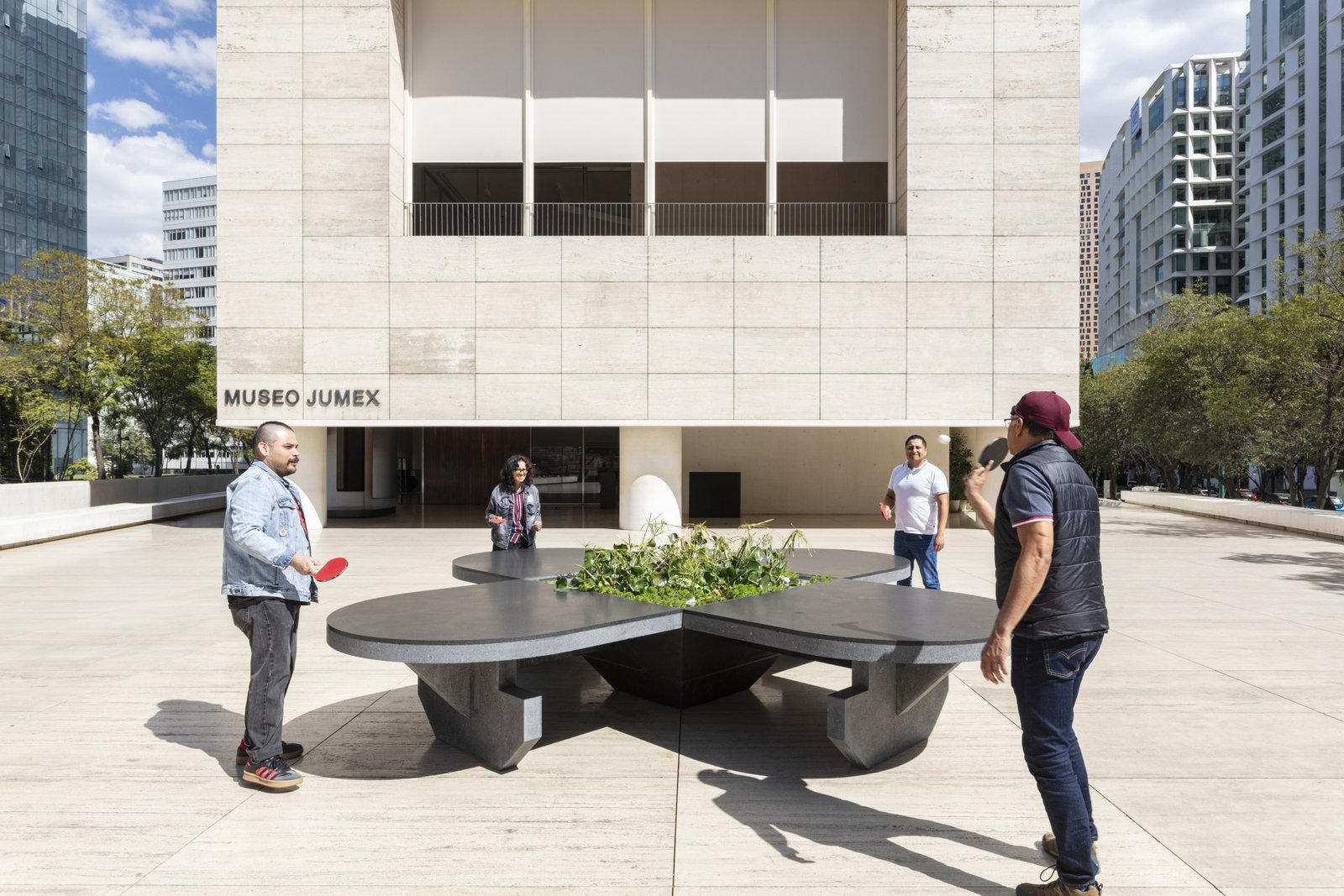 Installation view of the exhibition Gabriel Orozco: Politécnico Nacional. Museo Jumex, 2025. Photo: Gerardo Landa & Eduardo López (GLR Estudio).
Installation view of the exhibition Gabriel Orozco: Politécnico Nacional. Museo Jumex, 2025. Photo: Gerardo Landa & Eduardo López (GLR Estudio).
Gabriel Orozco: Politécnico Nacional is an exhibition where you’re not only allowed to touch the works, but you can genuinely have fun and play. Like the pool table on the second floor, where the white ball hangs from a string—and must be struck while it’s in motion.
GABRIEL OROZCO AND HIS IRREVERENT WORKS
Orozco will surely be remembered by many for his participation in the 1993 Venice Biennale with Empty Shoebox (1993). In a setting often impersonal and standardized, where everyone is expected to exhibit, Orozco made a surprisingly intimate move: he chose to exhibit a simple white, empty shoebox.
The artist has often said he uses shoeboxes to store small objects, works, memories—a practice many of us share. A domestic, private space that becomes a container of memory and intimacy. With Empty Shoebox, Orozco fills the large and anonymous exhibition space with something radically personal: a fragile, everyday container that becomes a metaphor for his life archive.
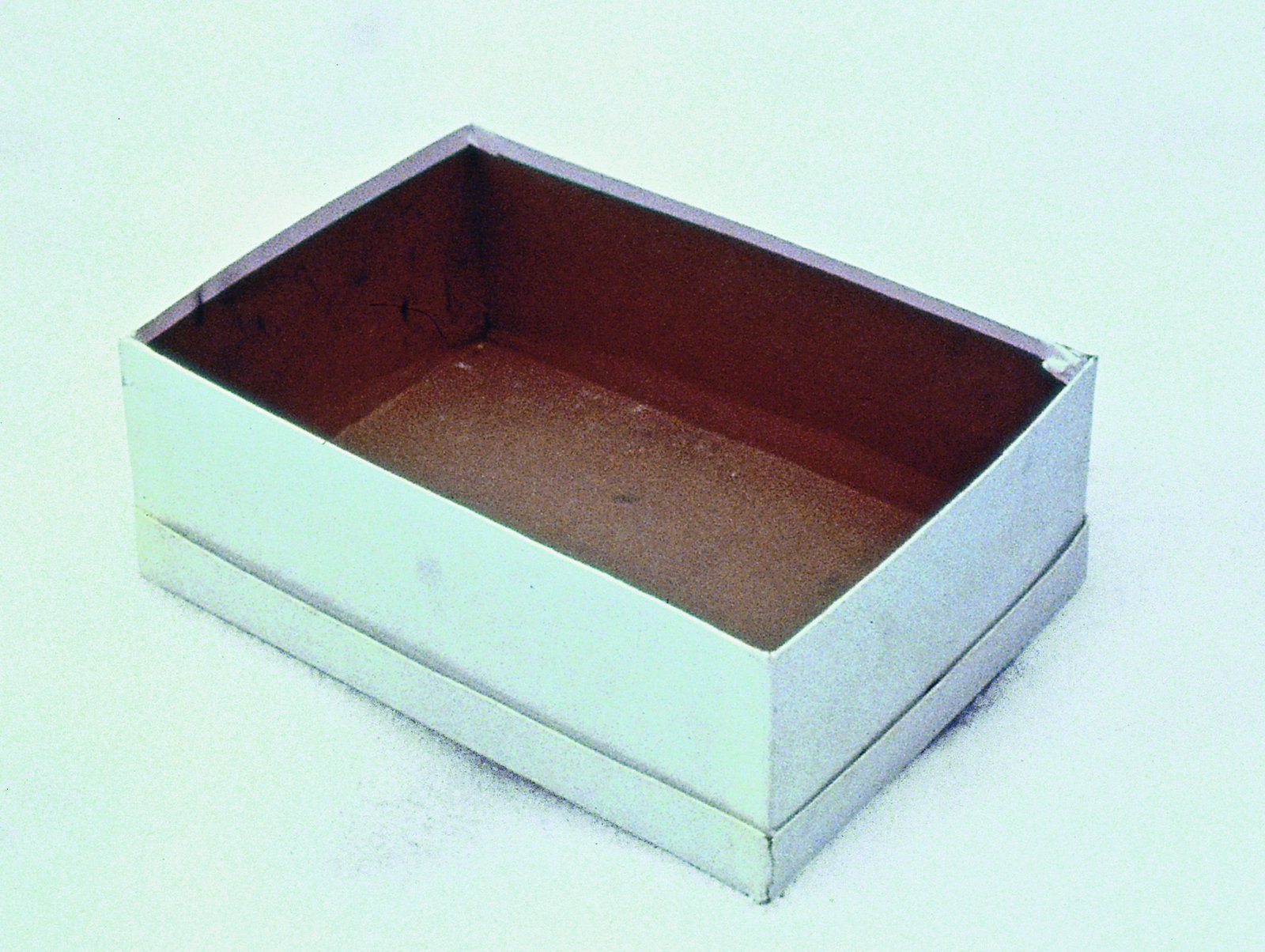 Empty Shoe Box (Caja vacia de zapatos), 1993
Empty Shoe Box (Caja vacia de zapatos), 1993
Also amusing is the anecdote the artist himself tells about installing this piece:
“Just before the opening, I was checking my space and couldn’t find the shoebox. I immediately thought the cleaning staff had thrown it away. I went to the dumpster, and there it was—I retrieved it and put it back in.”
This episode encapsulates the full irreverent and ironic force of his artistic practice. With Orozco’s works, you reflect, laugh, play—but most importantly, you learn to observe the world from new perspectives.
If you’re planning to visit Mexico City this summer, I strongly recommend a stop at the Museo Jumex to see Gabriel Orozco’s exhibition and discover this vibrant space. You won’t regret it!
Cover image: Installation view of the exhibition Gabriel Orozco: Politécnico Nacional. Museo Jumex, 2025. Photo: Gerardo Landa & Eduardo López (GLR Estudio).
Alessio Vigni, born in 1994. He designs, edits, writes and deals with contemporary art and culture.
He collaborates with important museums, art fairs and artistic organisations. As an independent curator, he works mainly with emerging artists. He recently curated “Warm waters” (Rome, 2025), “SNITCH Vol.2” (Verona, 2024) and the exhibition “Empathic Dialogues” (Milan, 2024). His curatorial practice explores the relationship between the human body and the social relationships of contemporary man.
He writes for several specialised magazines and is author of art catalogues and podcasts. For Psicografici Editore he is co-author of SNITCH. Dentro la trappola (Rome, 2023). Since 2024 he has been a member of the Advisory Board of (un)fair.
